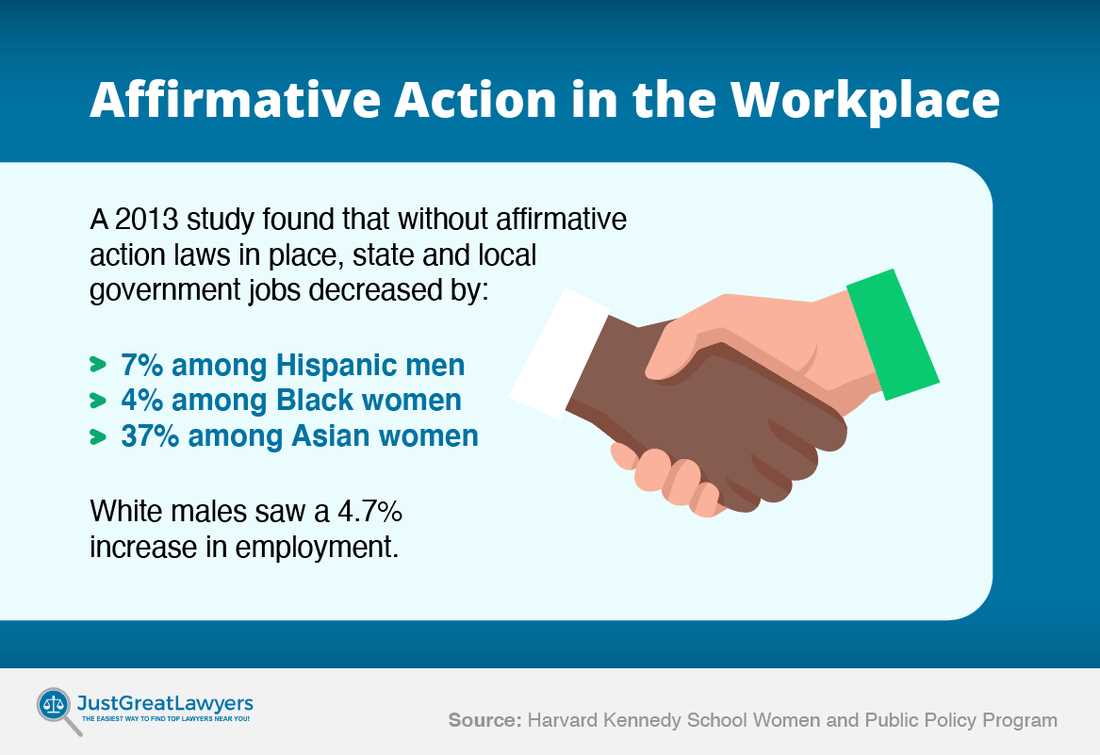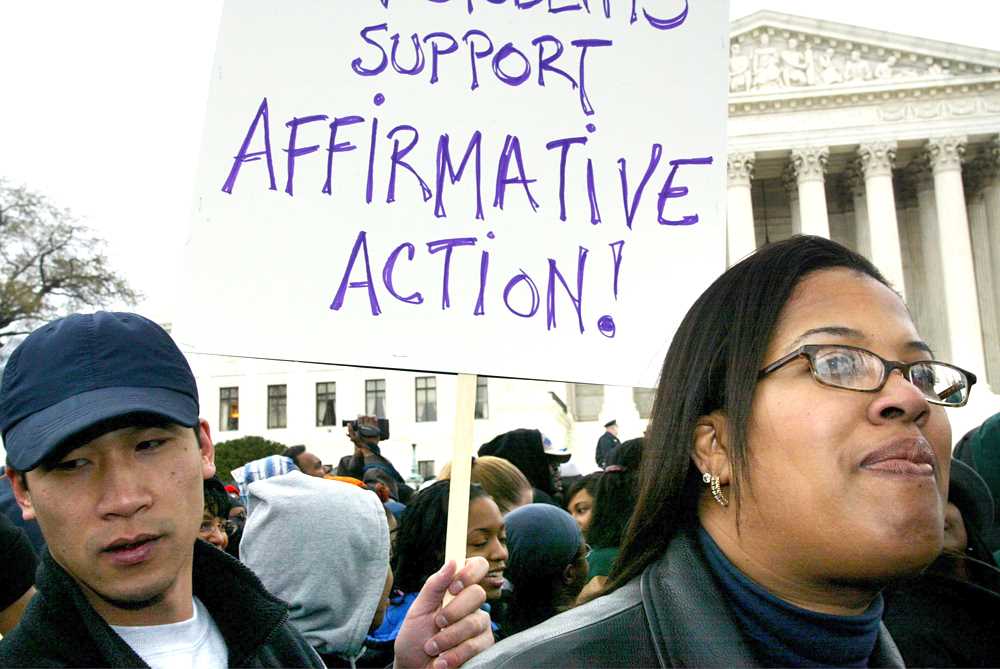What Is Affirmative Action?
Affirmative action is a policy that aims to promote equal opportunities for individuals from historically marginalized groups, such as women, racial and ethnic minorities, and individuals with disabilities. It is a proactive approach to address the systemic discrimination and underrepresentation faced by these groups in various sectors, including education, employment, and government contracting.
Definition and Purpose
The purpose of affirmative action is to level the playing field and provide preferential treatment to individuals who have been historically disadvantaged due to factors beyond their control. It seeks to create a more inclusive society by actively promoting diversity and ensuring that all individuals have equal access to opportunities.
History and Implementation
Affirmative action was first introduced in the United States in the 1960s as a response to the civil rights movement and the need to address the historical discrimination against African Americans. It has since expanded to include other marginalized groups, such as women and individuals with disabilities.
The implementation of affirmative action policies varies across countries and organizations. Some countries, like the United States, have specific laws and regulations that require government agencies and certain employers to adopt affirmative action measures. These measures can include setting diversity goals, implementing recruitment and hiring practices that prioritize underrepresented groups, and providing targeted support and resources.
How It Works

Affirmative action works by providing preferential treatment to individuals from historically marginalized groups in the form of quotas, set-asides, or goals. These measures are designed to ensure that a certain percentage of opportunities, such as admission to educational institutions or job positions, are reserved for individuals from underrepresented groups.
However, it is important to note that affirmative action does not guarantee automatic admission or employment solely based on one’s membership in a marginalized group. It is meant to be a factor among many others in the decision-making process, taking into account an individual’s qualifications and potential to contribute to diversity and inclusion.
Eligibility and Criteria
The eligibility criteria for affirmative action programs vary depending on the specific context and jurisdiction. Generally, individuals who have been historically disadvantaged or underrepresented due to their gender, race, ethnicity, or disability are considered eligible for affirmative action benefits.
The criteria for selection under affirmative action programs may include factors such as socioeconomic background, educational disadvantage, or membership in a specific marginalized group. These criteria are intended to identify individuals who have faced systemic barriers and provide them with additional opportunities to overcome those barriers.
Benefits and Controversies
Affirmative action has been credited with increasing representation and opportunities for marginalized groups in various sectors. It has helped to diversify educational institutions, workplaces, and government agencies, leading to a more inclusive society.
However, affirmative action is not without controversy. Critics argue that it can lead to reverse discrimination, where individuals from non-marginalized groups are disadvantaged in favor of individuals from marginalized groups. They also argue that affirmative action undermines the principle of meritocracy and can perpetuate stereotypes and stigmatization.
Despite the ongoing debates and controversies surrounding affirmative action, it remains a significant policy tool in the pursuit of equal opportunities and social justice.
Definition and Purpose
Affirmative action is a policy or program that aims to address historical and ongoing discrimination by providing preferential treatment to individuals from marginalized groups, such as racial or ethnic minorities, women, and individuals with disabilities. The purpose of affirmative action is to promote equal opportunity and diversity in areas such as education, employment, and government contracting.
The definition of affirmative action can vary depending on the context and the specific laws or policies in place. In the United States, for example, affirmative action is primarily associated with efforts to combat racial discrimination. However, it can also encompass other forms of discrimination, such as gender or disability-based discrimination.
The main goal of affirmative action is to create a level playing field by taking proactive measures to ensure that individuals who have historically faced barriers and disadvantages have equal access to opportunities. By providing preferential treatment, such as setting quotas or implementing targeted recruitment and hiring practices, affirmative action seeks to address the systemic inequalities that have persisted in society.
Affirmative action is often implemented through various policies and programs, such as admission policies in educational institutions, hiring and promotion practices in workplaces, and procurement policies in government contracting. These policies aim to increase the representation and participation of marginalized groups in areas where they have been historically underrepresented.
While the specific goals and methods of affirmative action can vary, the underlying principle is to promote diversity and equal opportunity. Proponents argue that affirmative action is necessary to rectify past and ongoing discrimination and to foster a more inclusive and equitable society. Critics, on the other hand, argue that affirmative action can lead to reverse discrimination and undermine the principle of meritocracy.
History and Implementation

Affirmative action is a policy that was first implemented in the United States during the 1960s as a way to address historical and ongoing discrimination against certain groups, particularly African Americans and other minorities. The policy was designed to promote equal opportunities and ensure that individuals from underrepresented groups have access to education, employment, and other opportunities.
The roots of affirmative action can be traced back to the Civil Rights Movement, which fought for the equal rights of African Americans and other marginalized groups. The movement aimed to address the systemic racism and discrimination that had been prevalent in American society for centuries.
In 1961, President John F. Kennedy signed an executive order that established the Committee on Equal Employment Opportunity. This committee was tasked with ensuring that federal contractors did not discriminate against employees or applicants on the basis of race, color, religion, sex, or national origin.
However, it was not until 1965, under President Lyndon B. Johnson, that affirmative action was formally introduced as a policy. Johnson’s executive order required federal contractors to take affirmative action to ensure equal employment opportunities for individuals regardless of their race, color, religion, sex, or national origin.
Since then, affirmative action has been implemented in various sectors, including education, employment, and government contracting. It has been a subject of debate and controversy, with critics arguing that it promotes reverse discrimination and undermines meritocracy, while proponents believe it is necessary to address historical inequalities and promote diversity.
Over the years, the implementation of affirmative action has evolved and faced legal challenges. The Supreme Court has issued several rulings that have shaped the policy, including the landmark case of Regents of the University of California v. Bakke in 1978, which established that race could be considered as one of many factors in college admissions.
Today, affirmative action continues to be a topic of debate and discussion. Some states have banned the use of affirmative action in college admissions, while others have implemented policies to promote diversity and equal opportunities. The future of affirmative action remains uncertain, but its impact on addressing historical discrimination and promoting equality cannot be denied.
How Affirmative Action Works
Affirmative action is a policy that aims to address historical inequalities and promote diversity in various sectors, including education, employment, and government contracting. The policy works by implementing measures to ensure equal opportunities for individuals from underrepresented groups.
Here are the key steps involved in how affirmative action works:
- Evaluation of Current Representation: The first step in implementing affirmative action is to evaluate the current representation of underrepresented groups in a particular sector. This involves collecting data on the demographic composition of the workforce or student body.
- Setting Goals and Targets: Based on the evaluation, goals and targets are set to increase the representation of underrepresented groups. These goals are typically expressed as percentages or numerical targets to be achieved within a specific timeframe.
- Recruitment and Outreach: To achieve the set goals, organizations and institutions actively engage in recruitment and outreach efforts targeted towards underrepresented groups. This may involve advertising job or educational opportunities in specific communities or providing scholarships and financial aid to individuals from disadvantaged backgrounds.
- Selection and Admissions Process: In the selection and admissions process, affirmative action policies may give preferential treatment to individuals from underrepresented groups. This can include considering race, gender, or other characteristics as factors in the decision-making process.
- Monitoring and Reporting: Affirmative action policies require ongoing monitoring and reporting to assess progress towards the set goals. This involves collecting data on the representation of underrepresented groups and evaluating the effectiveness of the implemented measures.
It is important to note that affirmative action does not involve quotas or the exclusion of individuals from majority groups. The policy aims to level the playing field by providing equal opportunities to historically disadvantaged individuals, without discriminating against others.
While affirmative action has been successful in increasing diversity and addressing historical inequalities, it remains a topic of debate and controversy. Critics argue that it can lead to reverse discrimination or undermine merit-based selection processes. Proponents, on the other hand, argue that it is necessary to promote equal opportunities and create a more inclusive society.
Eligibility and Criteria
Racial and Ethnic Minorities

One of the main focuses of affirmative action is to promote equal opportunities for racial and ethnic minorities who have historically faced discrimination and barriers to success. In order to be eligible for affirmative action programs, individuals must belong to these minority groups. This can be determined through self-identification or through official documentation, such as birth certificates or immigration records.
Women
Another important aspect of affirmative action is to address gender disparities and promote gender equality. Women who have faced discrimination or have been historically underrepresented in certain fields or industries may be eligible for affirmative action programs. This can include opportunities in education, employment, or business ownership.
It is important to note that eligibility for affirmative action programs does not guarantee automatic selection or preferential treatment. Affirmative action aims to level the playing field and provide equal opportunities, but individuals must still meet the necessary qualifications and criteria for a particular position or opportunity.
| Criteria | Description |
|---|---|
| Historical Disadvantage | Individuals or groups who have faced historical disadvantages due to discrimination or barriers to success. |
| Underrepresentation | Individuals or groups who are underrepresented in certain fields, industries, or positions. |
| Qualifications | Individuals must still meet the necessary qualifications and criteria for a particular position or opportunity. |
Overall, the eligibility and criteria for affirmative action programs aim to address historical disadvantages and promote equal opportunities for marginalized groups. By providing these opportunities, affirmative action seeks to create a more inclusive and equitable society.
Benefits and Controversies
Affirmative action has been a subject of intense debate and controversy since its inception. Advocates argue that it is a necessary tool to address historical and systemic discrimination, promote diversity, and create equal opportunities for marginalized groups. They believe that without affirmative action, these groups would continue to face barriers and be underrepresented in various sectors.
One of the main benefits of affirmative action is that it helps to level the playing field for historically disadvantaged groups. By implementing policies that prioritize diversity and inclusion, affirmative action aims to provide equal access to education, employment, and other opportunities. This can lead to increased representation of marginalized groups in areas where they have been historically underrepresented.
Proponents of affirmative action argue that it also promotes diversity, which has been shown to have numerous benefits. Diversity in educational institutions and workplaces can enhance creativity, critical thinking, problem-solving, and innovation. It exposes individuals to different perspectives and experiences, fostering a more inclusive and tolerant society.
However, affirmative action also faces significant controversy and criticism. Critics argue that it can lead to reverse discrimination, where individuals from privileged groups are disadvantaged in favor of less qualified candidates from marginalized groups. They believe that merit should be the sole criteria for admissions and employment, and that affirmative action undermines this principle.
Another concern is that affirmative action may perpetuate stereotypes and stigmatize individuals from marginalized groups. Critics argue that it can create a perception that these individuals are only successful because of their race or gender, rather than their abilities and qualifications. This can undermine their achievements and contribute to a sense of tokenism.
Furthermore, some argue that affirmative action does not address the root causes of inequality and discrimination. They believe that it is a band-aid solution that fails to address systemic issues and may even perpetuate them. Critics argue that resources should be focused on addressing the underlying causes of inequality, such as improving access to quality education and addressing socioeconomic disparities.

Emily Bibb simplifies finance through bestselling books and articles, bridging complex concepts for everyday understanding. Engaging audiences via social media, she shares insights for financial success. Active in seminars and philanthropy, Bibb aims to create a more financially informed society, driven by her passion for empowering others.
